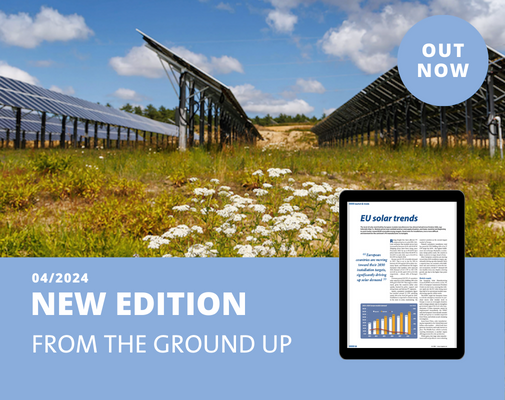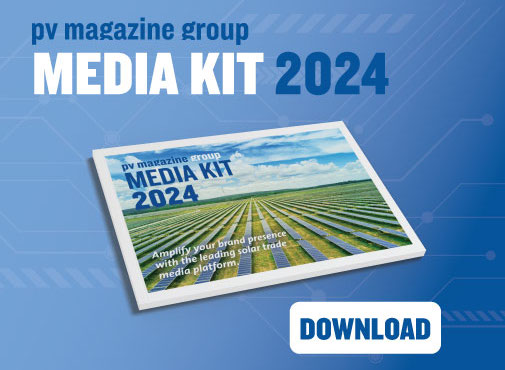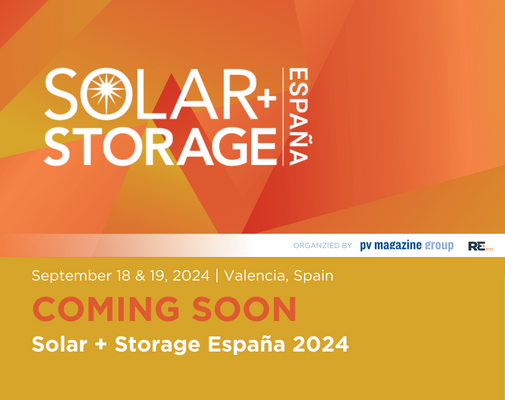Top News
Avaada Energy wins 250 MW solar-wind hybrid tender with $0.042/kWh bid
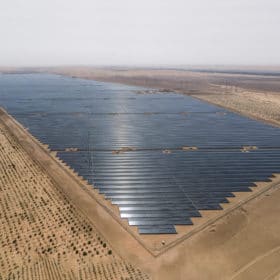
EWEC seeking proposals for 1.5 GW of solar in Abu Dhabi
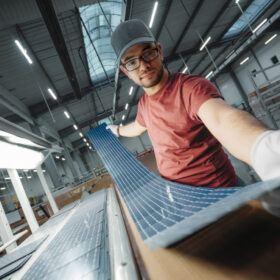
French PV module maker Systovi goes into liquidation
pv magazine Webinar
pv magazine Webinar
MEDIA KIT 2024
Sign up for our free pv magazine newsletters

ArcActive targets Australia with ‘re-engineered’ lead-acid battery tech
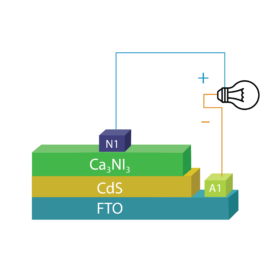
Researchers design 31%-efficient perovskite solar cell based on calcium nitrogen iodide
Ensemble techniques for solar energy forecasts
Mooring system design for offshore floating photovoltaics
Agrivoltaics for berries
Press Releases
Astronergy Thailand Manufacturing Base perfects its industry chain with wafer lines
ATW Breakthroughs at SOLAREX ISTANBUL 2024 and the 12th Energy Storage International Conference and Expo
JinkoSolar’s Tiger Neo to Power Africa’s First Commercial Green Iron Plant in Namibia
Solar Charter unites EU governments and solar sector in commitment to reshore solar manufacturing in Europe
Opinion & Analysis
Featured
Making the case for concentrated solar power
A new twist on thermal storage
Power Panel offers a PV and thermal storage solution that combines simple, safe and easy to manage hot water with advanced thermoplastic technology and architecture.
What does solar need to keep investment flowing?
In its latest monthly column for pv magazine, SolarPower Europe describes which policy tools are expected to help Europe move at a faster pace in solar and renewable energy deployment. The European trade body discusses the upcoming support schemes, the transformation of the PPA market and the rise of green finance.
Solar cell prices fall for 3rd consecutive week
In a new weekly update for pv magazine, OPIS, a Dow Jones company, provides a quick look at the main price trends in the global PV industry.
‘I don’t think I had more difficulties establishing myself in senior roles than my male colleagues’
This week, Women in Solar Europe (WiSEu) gives voice to Maria Sabella, CEO and founder of Italy-based Enlight Energy Services. She told as, in some cases, at the beginning of her working relationships, she felt some prejudgment from male colleagues, but she also aknowledged, that the initial reaction disappeared after the focus on the details of the activity to be performed increased.
European Solar sees warm, cloudy end to winter, linked to record temperatures
In a new weekly update for pv magazine, Solcast, a DNV company, reports that in March most European solar operators and grids saw less solar irradiance and production than normal, due to enhanced westerly winds bringing moist air off a relatively warm Atlantic ocean. Large areas of the continent saw irradiance down 10% to 25% below normal for March.
Markets & Policy
Featured
Bifacial panels, representing 98% of U.S. solar imports, may soon be subject to tariffs
Eskom launches tender to build 75 MW solar project at coal plant
Utility Eskom is seeking proposals to build a 75 MW solar plant at the Lethabo Power Station in South Africa’s Free State province.
Nhoa Energy commissions battery storage project in Taiwan
Nhoa Energy, an Italian developer, has commissioned a battery energy storage project for Taiwan Cement Group in Yilan county, Taiwan, with a capacity exceeding 120 MWh.
AleaSoft notes slight recovery in European electricity prices
AleaSoft Energy Forecasting says that all major European electricity markets, except for Italy, have recorded negative hourly electricity prices for the second straight week. However, the Spanish consultancy notes that prices generally remain low.
Sunmaxx PVT opens 50 MW PV-thermal module factory in Germany
Sunmaxx PVT, a photovoltaic-thermal (PVT) solar module specialist, has built an automated 50 MW module factory near Dresden, Germany.
Origami Solar readies production of steel solar module frames
The U.S. based developer of steel PV module frames said its products are an alternative to conventional aluminum frames. They passed several third party tests as the company readies production and evaluations by module manufacturers.
Installations
Featured
Hail damage and toxicity risks in solar plants
India releases draft guidelines for residential rooftop solar subsidies
India’s Ministry of New and Renewable Energy (MNRE) has released draft guidelines for the PM Surya Ghar: Muft Bijli Yojana scheme, which aims to install rooftop solar plants in 10 million households, with subsidy support from the central government.
Vast Solar to build 30 MW/288 MWh CSP plant in Australia
Renewables developer Vast Solar has signed a key engineering contract as it pushes toward construction of a 30 MW/288 MWh thermal concentrated solar power (CSP) plant with more than eight hours of energy storage capacity near Port Augusta, South Australia.
Sunman launches glass-free balcony solar modules
The Chinese manufacturer said its new frameless module can be installed on a balcony through nylon cable ties, without the need for any mounting structure. The new product features a power output of 200 W and a power conversion efficiency of 16.2%.
System design for PV-driven hybrid EV charging stations
Researchers in India have simulated a 4 kW solar power-based hybrid electric vehicle (EV) charging station using a three-stage charging strategy and found that the station is capable of charging 10–12 EVs with 48 V 30 Ah lithium-ion batteries.
LevelTen Energy reports stable solar PPA prices for US market
LevelTen Energy says in a new report that solar power purchase agreement (PPA) prices have remained stable in the United States, indicating greater stability after a period of market volatility.
Technology
Featured
European Space Agency mulling feasibility of space-based solar power
ABB Motion launches new solar drive for water pumping
ABB Motion has unveiled a new solar drive for water pumping, featuring integrated maximum power point tracking (MPPT) logic to maximize operations, with an input voltage ranging from 225 V to 800 V.
New vapor deposition tech could accelerate commercialization of perovskite solar cells
A U.S.-based team developed a vapor deposition technique to fabricate outperforming all-inorganic perovskite thin films in under 5 minutes in a continuous process. The adoption of the proposed approach may also result in higher perovskite solar cell power conversion efficiencies.
Four-terminal tandem organic solar cell achieves 16.94% efficiency
Researchers in Spain claim to have recorded the highest power conversion efficiency result for a four-terminal tandem organic cell to date. The device is based on an ultrathin transparent silver electrode.
Reducing PV module temperature with radiative cooling based on polymeric coatings
A Saudi research group has assessed how polymeric coatings, such as polyethylene terephthalate (PET) and polydimethylsiloxane (PDMS), could be used for radiative cooling in photovoltaic panels and has found that both materials could reduce the operating PV module temperature by between 1.15 C and 1.35 C.
The Hydrogen Stream: Vale opens hydrogen metallurgy lab in China
Vale and Central South University have launched a joint laboratory for low-carbon and hydrogen metallurgy in Changsha, in China’s Hunan province, while Nippon Steel has secured approval to acquire U.S. Steel.
Manufacturing
Featured
EC announces European Solar Charter to support PV manufacturing
European study shows continent exports solar waste
Europe’s solar boom is hiding its waste through exports, according to a new study. Instead of recycling, as expected under European regulations, vast amounts of solar panel waste are exported, undermining sustainability goals. The researchers suggest a digitized value chain as a potential fix to work toward a circular economy.
Spanish installer tests vertical rooftop PV array based on conventional panels
Sud Renovables has installed a pilot vertical rooftop PV system on one of its facilities in Barcelona, Spain. The array features two 500 W bifacial modules from US-based SunPower and two microinverters from Enphase Energy.
‘Polysilicon price will stay above $5.50/kg for at least a year,’ says analyst
Andries Wantenaar, solar analyst at Rethink Technology Research, tells pv magazine that high overcapacity levels in the polysilicon industry are exerting enormous pressure on prices for the entire supply chain. He says China hit 2.4 million tons of polysilicon production capacity at the end of 2023, and notes that the nation will end 2024 with 4 million tons of capacity if all announced production plans are realized.
Turkish solar module manufacturer launches production in Texas
Elin Energy says it has an agreement with key US distributors and will begin with 1 GW of annual PV module production, with plans to increase to 2 GW within 18 months.
Dracula Technologies, STMicroelectronics unveil photovoltaic illuminometer
France’s indoor organic PV specialist Dracula Technologies and Swiss-headquartered semiconductor manufacturer STMicroelectronics demonstrated a battery-free illuminometer at the Embedded World trade fair in Germany last week.
Energy Storage
Featured
JLR, Allye Energy partner on 270 kWh portable battery energy storage system
Rechargeable magnesium batteries for grid-scale storage
Researchers in Japan have developed a novel cathode material for rechargeable magnesium batteries (RMBs) in the form of rocksalt oxide. This new material reportedly enables efficient charging and discharging even at low temperatures.
Key takeaways from Advanced Battery Power + V2G conference
Battery research is advancing to address issues in the lithium-ion development process and concerns about safety and aging. Vehicle-to-everything (V2X) tech, meanwhile, is in the starting blocks, but interoperability is the key hurdle to achieving mass market penetration.
Photovoltaics for cold storage
Researchers in China have developed a photovoltaic cold storage system that is reportedly able to improve refrigeration capacity and ice storage rate. The system is said to ensure a stable cooling system operation for the refrigeration needs of agricultural products.
Alpha Innotec launches new residential heat pumps
The German manufacturer said the new air-to-water systems are part of its Hybrox series. Their coefficient of performance is between 4.3 and 5.3 and their size ranges from 11 kW to 16 kW.
Engie connects solar mini-grid in Benin
The mini-grid, expected to connect over 1,500 residents to electricity, is part of the company’s wider plans to install over 20 mini-grids in Benin, which will serve more than 30,000 people across 20 rural localities collectively, through a total 1.2 MW capacity.
